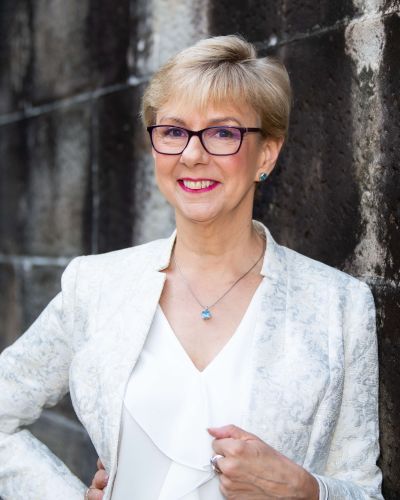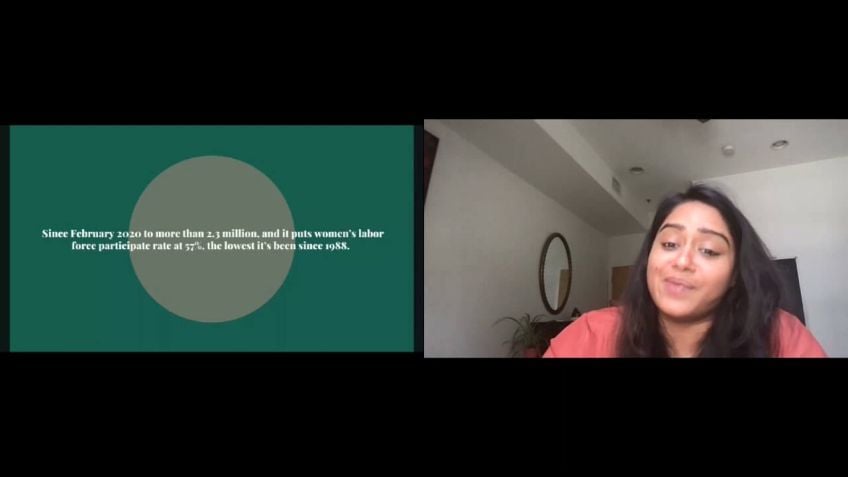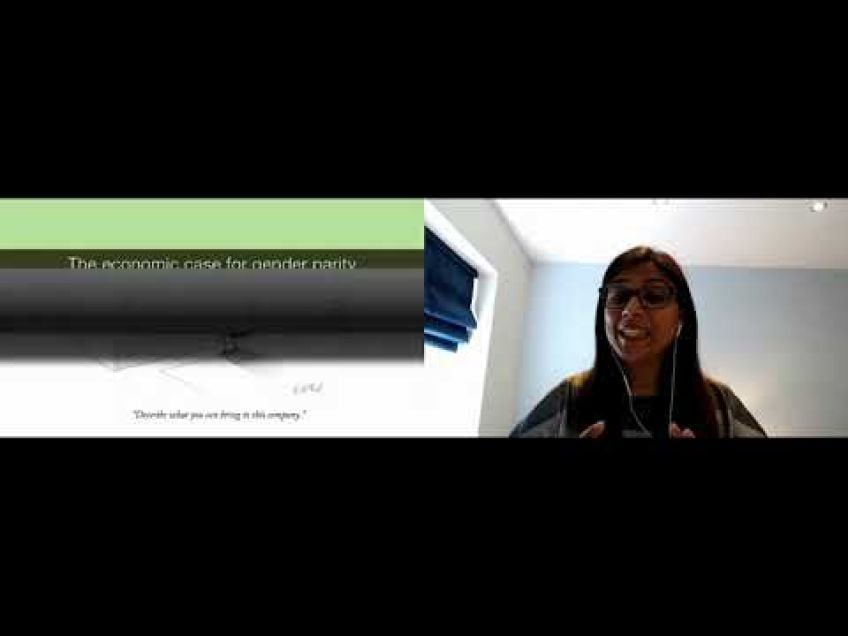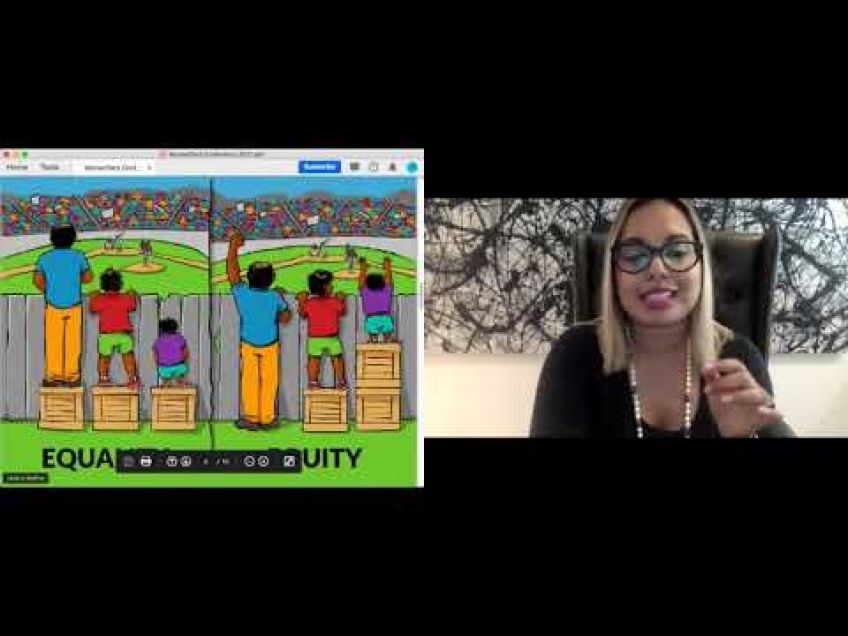The 5 Step Roadmap to a Future Fit Organization
Kim Seeling Smith
CEO & FounderBuilding a Future Fit Workforce Amidst Disruptions: A Five-Step Roadmap
The global workforce underwent a radical change on March 13, 2020 - a day that marked the start of the monumental work-from-home experiment triggered by the COVID-19 pandemic. No new trends emerged overnight, but existing workplace trends gained accelerated momentum. Now is the time to discuss these trends, the talent shortage, the disruptions we face, and a roadmap to navigate towards a future-fit workforce. Here's a roundup of our discussion on igniting our organizations amidst disruption and embracing a future-fit workforce.
Navigating the Talent Shortage and Disruptions
The current talent shortage might seem temporary, but it's a structural issue set to stick around for a long time, according to the World Economic Forum. With fewer people joining the workforce and many tasks becoming tech-dependent, a talent gap appears inevitable. The challenge now is: how do we seize the opportunities and overcome the challenges of the looming talent shortage and these disruptions?
A Five-Step Roadmap to a Future Fit Organization
- Starting with Purpose and Values: More than ever before, employees gravitate toward companies whose purpose aligns with their personal visions. Create a compelling and meaningful purpose and establish authentic values.
- Reimagining Accountability and Performance: Modernize the perception of accountability and performance. Set outcome-based goals with measurable results, while understanding personal dreams, goals, and aspirations of your employees - cohesion of organizational and personal goals induces ownership and facilitates high performance.
- Bringing back Humanity in the Workforce: Switch from viewing people as resources to acknowledging them as human beings who bring unique assets to the table. Develop a workplace culture that thrives on trust, respect, and inclusion.
- Employing Agile Decisiveness: Harness collaboration and improve decision-making processes. Maintain an open mindset that is ready to make the best decisions at the time and revise them when required.
- Challenging Traditional People Practices: Revisit talent attraction and employee engagement strategies. Update long-standing people practices to thrive in the changing world of work.
Bottom Line
Moving forward, we need to redefine the structures of our organizations to build a future-fit workforce that can adapt to and navigate the ongoing disruptions in our workspaces. With this five-step roadmap, we're confident businesses can overcome current challenges and maintain a highly engaged and motivated workforce for years to come.
Video Transcription
Night Global, we help organizations build and retain a future fit workforce. And today I am so pleased to pre to be presenting my five step roadmap to a future fit organization. You know, the world of work drastically changed on Friday the 13th of March 2020.And I love that cosmic joke, Friday the 13th. Really? Yes. Really Friday the 13th of March 2020 was the day that we realized that COVID was going to be a thing. And it's the day that most of the world started the greatest work from home experiment in the world. Now COVID didn't create any new trends. But what that that disruption did changing where we work and subsequently when and how we work actually accelerated some other trends that we had been seeing build over the last 20 to 30 years and just like a wave building from offshore, slowly gaining momentum and gathering speed when COVID hit these other workplace trends.
It's like the waves crashed on the shore. And now we're in a unique moment in time where critical talent shortage is running headlong into some significant disruptions that are changing the way that we as individuals as leaders and as organizations have to operate, we're in the midst of this talent shortage and these disruptions.
And I want to talk about a little bit about both before I jump into the five step road map because I think it's important to give you a little bit of context. So recently, it's been interesting because I've been talking to senior leaders like yourselves about the talent shortage and some of the feedback that I'm getting is, you know, if we do go into recession, if we see economic headwinds, the one thing that might come out of this, that would be a good thing is that we have access to more talent again.
And some of the tech layoffs that some of you have been experienced. I've heard senior leaders saying that that's a good thing because that's going to even out the marketplace and maybe our people won't be so needy anymore. I'm hearing this and I've got a couple of things to say about that. First of all, we may be in a momentary blip in time, but structurally this talent shortage is going to stay around for a very long time, at least the next 10 years according to the World Economic Forum, because it's structural talent shortage, we have an aging workforce. There's only about 75% of people joining the workforce over the next 40 years as there has been over the last 40 years and the talent that we have available sometimes is very different than the talent that we need because of technology. Now. Corn Ferry actually says that by 2030 we're gonna have 85 million more jobs than people to fill them. So that's pretty scary. So we are in this perfect storm talent shortage running headlong into disruption. I am somebody who studies patterns for a living and I've had ignite Global, I formed ignite Global about 14 years ago. And in that 14 years, I've been looking at workplace and workforce trends.
I've been looking at market trends and most recently, I've been looking at disruption, clearly COVID was a huge disruption and hopefully the most significant disruption of our lifetime, but certainly not the last. In fact, our organizations are facing three disruptions and I want to go through those now and then the five step roadmap will help you overcome the challenges presented by these disruptions, but also seize those opportunities. And there are many. So the three disruptions that I, that the research is telling me that our organizations are going to be facing over the next 10 years really comes down to technology, the big global factors and what I call the rise of the empowered workforce. We've already talked about technology, technology has changed how we do, what we do. And with chat GP T GP T four, all the A I tools coming on board. I don't have to tell you this. All of you are in technology you know what a game changer. It it is. So it's changing the way we shape our roles. And as leaders, we have to take that into consideration as we both hire and retain staff. Then the second disruption, the the big societal changes that we're seeing the shifting geopolitical landscape, climate change, supply chain disruptions, social justice reckoning.
Just to name a few what this is requiring of us as leaders is to help manage the stress and the anxiety that comes from all these changes from the human beings on our team. But as leaders of our organization and I don't care if you have a leadership title or you're a sole contributor, you're all leaders. What this is requiring our organizations to do is to be more innovative, more creative, more strategic, to be more agile and to communicate more effectively.
Now, these are two very significant disruptions, two game changers that we're facing, but it's nothing compared to the third disruption that we're seeing what I call the rise of the empowered workforce because we have more jobs than candidates to fill them because of this town shortage.
And also because over the last three years, people have become very clear about what they want, what they don't and they're willing to vote with their feet. The workforce has changed, the balance of power has shifted since the days of the industrial revolution. The balance of power has been firmly in the hands of the organization but of course, now with the rise of the empowered workforce that is shifting now, it's clearly in the hands of the individual and people are becoming a little bit more needy. Dare I say a little bit more entitled, but I believe that it's what we do as leaders as an organization. It's the old school thinking that we're applying to the workforce that is creating the entitlement that we're seeing from the workforce. So what do we do about this? How do we seize those opportunities and overcome those challenges of these three disruptions? Let me introduce my five step road map. Then I'm going to give you an overview of each of the five steps. And at the end, I'll give you a QR code to download a free white paper that unpacks them in more detail and a free white paper on employee engagement and retention. So my five step road map, it all starts with purpose and values. The next step is accountability and performance. You know, we need to update our thinking on how we manage accountability, how we manage performance. As a matter of fact, I don't think we can manage performance of other people at all. Tell you a little bit more about that.
In a second. The third step is to bring humanity back in the workforce to start treating people as human beings instead of resources. The fourth is to uh employ what I call agile decisiveness. And the fifth is to question the old school practices and processes that we use to manage, to hire and to manage our people. So let me go through these in a little bit more detail. And then like I said, I'll give you a chance to download the white paper with a lot more information on it. So it's all starts with purpose and values, purpose and values are absolutely key. Now, you know, in the days of your back in the, from the time of the industrial revolution, the one purpose for organizations was to make money, that's it. And then prior to the new millennium, prior to uh the year 2000, we start talking about the triple bottom line profit people and planet. But then since COVID, because of three years of post COVID reflection, pandemic, induced reflection, people are no longer willing to put up with organizations that just give lip service to purpose. As a matter of fact, what they're saying is that purpose.
Uh They, they want to align with a company whose purpose has a direct impact on the planet. And I'm not being hyperbolic here. I'll give you a couple of examples. In fact, I want you to, to take a look at this and, and get your chat fingers ready because I'd love for you to type in the chat box, what the common denominator is of these three examples. Now, it doesn't matter how large your organization is, how small your organization is or where in the world you are. I know we have a global audience here. Um Miriam, our, our tech expert who's hosting the session is from Pakistan. I despite the American accent is from uh I'm from Australia, so it doesn't matter where you are, the the same principle applies. So go ahead and type in the chat box and you guys are quiet, quiet today. What is the common denominator here? Changing the world through the world of work? That's inspiring workplaces, small but global organization. Uh Sigma Aerospace, they're an aircraft maintenance company based in a regional airport. We keep people alive by providing world class maintenance repair operations and then Unilever large global company obviously to make sustainable living commonplace.
So yes, the common denominator here is that the purpose describes the impact on the world and I'm not being hyperbolic, this is what people are looking for. So I've got a piece of homework for you in a second. I've got two pieces of homework for you today and I'm about to reveal my first one. Purpose describes the impact that you make on the world. And I like to say that it's your compass, it's your guiding light. So if purpose is your compass is your guiding light, it helps inform where your organization is going. I think that values are your GPS system values can help you make decisions including hiring and firing decisions. Now, my go to example, for values is from the tech community.
Atlassian, not only has Atlassian won awards for their products, they've won awards for their human capital practices and processes and for their values. So now I want to reveal my first piece of homework for you. I highly encourage you to help your organization if you have influence within the organization as a whole, but certainly with your department, help craft a compelling purpose and meaningful values that are authentic. The second step in our five step road map is reimagining, accounting, accounting, accountability and performance.
We need to update our thinking around accountability and performance. You know, again, since the day is the industrial revolution, the way that we've thought about accountability is um it, it, it doesn't serve the workforce because since those days when we had a very different workforce, we gave them a list of duties and responsibilities and then tried to incentivize performance with that carrot.
And if they didn't perform, we beat them over the head with a stick hopefully figuratively, not literally, but, you know, the workforce has dramatically changed since the days of the industrial revolution. Back then, we were bringing people in from the farm to the factory, a lot of whom were not educated and they were doing very tactical, predictable work. Well, nowadays, our people have to think instead of using their hands, they're using their head and more and more their heart, especially with chat GP T taking over and automating a lot of what our people are now doing. So we have to think differently about this and that starts with thinking differently about how we provide a culture of accountability because we can't hold people accountable that presupposes that they don't have free will. And you know, as well as I do that people do have free will.
So task based job descriptions kill performance and take ownership and, and innovation away from our people. And isn't that what we want our people to uh to have ownership around their role and to be able to innovate to be able to, to be more agile. I love Simon Sin's quote about this. When we tell people to do their job, we get workers. When we trust people to get the job done, we get leaders. And again, it doesn't matter what level of organization that you're in. It's a new paradigm. It, it shifts us from thinking about our people as Children who need to be monitored closely, who need to be told what to do to thinking about them as adult and a an adult with free will who understand the and, and want to achieve high expectations. So what's my prescription for this? My prescription is to combine a couple of concepts that are really key in employee engagement and, and retention. First of all, set outcome based goals with measurable results. So your people understand what they need to not do but achieve to be successful and how you as their leader are measuring success. And then the second is to understand what their personal hope streams, goals and aspirations are so that you can combine those together so that you and they and the organization are all trying to achieve the same goals.
In that way, we can create a culture of mutual high performance and goal achievement. And that gives the ownership back into their hands, which I think is very, very critical. And the second part of this is that we need to, we need to think very, very critically about strategic planning. Recently, I was leading a group of 100 senior leaders through a two day leadership off site. And as I was checking into the hotel, it happened to be Seaworld in the Gold Coast in Australia. I was checking into the hotel. Another client rang, her name is Clarissa. Now she works in the same industry. And I talked to her on the phone and she said, gosh, it's noisy there. I said, yes, sorry, Clarissa, I'm at the front desk of Seaworld. She said, oh, are you on holiday? And I said, no, I said, I'm leading this this two day leadership retreat for a large uh engineering firm. And she said, oh, what's the topic? I said, the topic primarily is strategic workforce planning. And she started to laugh. I said, well, that's an odd reaction. Why are you laughing? And she said, well, you know, our organization and you know how far from thinking about and talking about strategic workforce planning we are and she was right.
And it, I became very sad at that because, uh, it's not unusual organizations are burying their heads in the sand when it comes to thinking about planning for not only the workforce that you need right now and in the next six months, but the workforce of the future, especially in light of chat GP T how, how is A I going to affect what we do?
So in terms of workforce planning, I think we need to do some real critical thinking around what tasks are going to be automated. What are humans need to do? Which humans we have currently in our workforce that can be trained on new skills and how to bring them along on the journey and then what other humans we need and where do we need them from? Do we need them locally? Do we need them offshore? Very, very critical critical topic. The third step in the five step road map is to bring humanity back into the workforce. We need to go, as I said before, from treating people as resources, human resources or human capital, not much better making uh understanding that the people that work in our teams are human beings and human beings have free, will have free choice and can be tremendous assets.
I wanna tell you the story of Alex. Alex is a CEO of A medical technology company. And recently I, I coach him on a fairly frequent basis. But recently he and I were talking and he was asking me to help him cha uh help him solve a challenge. And I just started talking to him and I asked one question, I said, what does your senior leadership think about this? And he said, hm, I've never asked them. Isn't that interesting? And then he started laughing, he said, do you know that senior leadership? That, that, that, that question is a question that you asked me every single time I bring a challenge to you. And I said, oh, is it? He said, yes, he said, you'd think I'd learned the lesson by now. Indeed, you would. But Alex represents so many leaders who are conditioned to think that they have to have all the answers who are conditioned to say to think about leadership as I'm leading from the front. I have to have the answers and bring people along with me. Instead. I think we need to change our challenge, our assumptions and think about leadership as uh collaborating with people. So managers have had a really difficult role in the last probably 10 to 20 years back in the mid 20th century, managers managed and doers did. But then in the 19 eighties and 19 nineties, we went through a series of cost cutting sizes and we put more and more pressure on our managers and they are now required to both do and manage.
And where do you think that their priorities lie, their priorities lie in the doing, not the managing. And as a result, we've got an 85% disengagement rate. So I think it's time to bring humanity back into the workforce to focus on our teams and think about our teams as our day job, we need to develop a culture of trust and respect. We need to care about them and show we care about them. We need to collaborate with them just like I described with my client Alex and we need to be inclusive. So that is bringing humanity back into the workforce. The only thing that I wanna say about agile decisiveness is that again from Alice Alex's example, we're trained to think about this in terms of leading from the front and having all the answers. Whereas we need to collaborate with people, we also need to get better at making decisions. We need the research shows that the the leaders with the best decisions, don't make the most right decisions. They make the best decisions at the time and then update their thinking. Speaking of updating their thinking, we need to update to our thinking around talent, attraction and employee engagement and retention. Our people practices have changed very little since the days of the industrial revolution.
The way we hire talent, the way we engage and retain has been the same for centuries. What people practices do you need to reimagine? So this is my five step roadmap to a future fit organization. If you want to do a deeper dive with me, grab your phone, hit this QR code, you'll get a couple of white papers and a copy of the slides. Also, I'd en you to link in with me. I'm the only Kim Seeing Smith on the planet and I'm happy to answer any questions or field, any comments that you have offline. Thank you so very much. Uh I think we might have time for one quick question. So I'm gonna look at the chat box here, right? Ok. If there aren't any questions, we will go ahead and wrap up the session. I very much appreciate your time and attention. And again, I'm the only Kim Seeing Smith on the planet. Please feel free to link in with me. Thank you so much for this opportunity.




